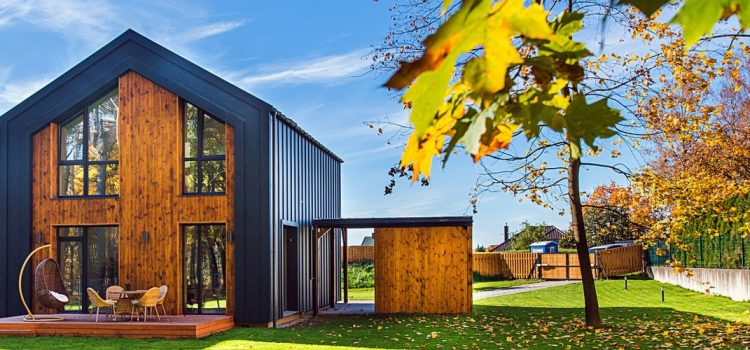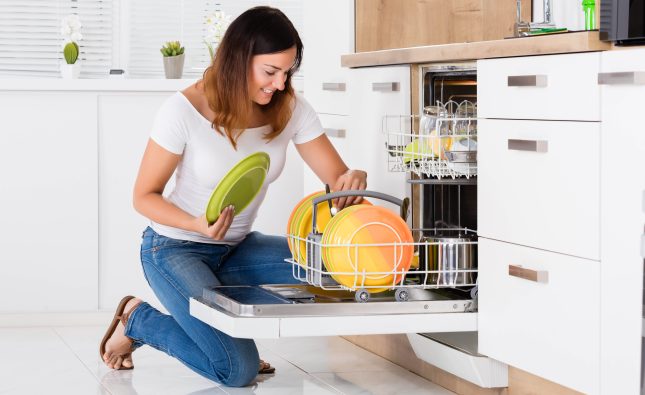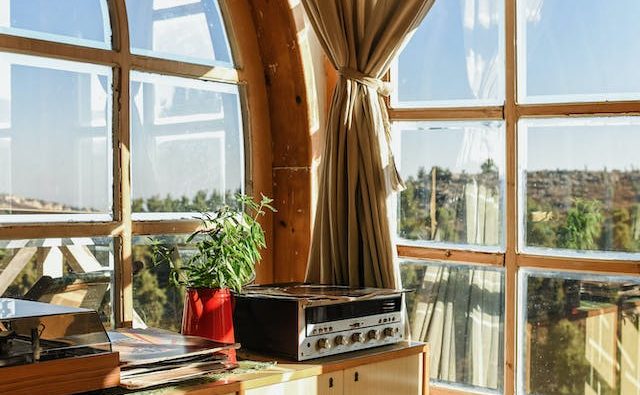
Introduction
Creating an eco-friendly home isn’t just good for the planet—it’s good for your health and wallet too. With growing awareness about climate change and environmental issues, more people are looking for ways to reduce their carbon footprint and adopt sustainable living practices. The good news? You don’t need a complete home overhaul to make a difference. Small, intentional changes can have a big impact over time. From reducing energy consumption to choosing sustainable materials, there are plenty of simple steps you can take to make your home more eco-friendly. In this article, we’ll explore practical tips and ideas to help you create a greener, healthier living space. Ready to transform your home into an eco-friendly haven? Let’s dive in.
The Rise of Eco-Friendly Homes

Eco-friendly homes are becoming more popular. People are starting to care more about protecting the environment and saving money. With the rise of renewable energy options like solar power and better insulation, it’s easier to make a home more sustainable. More people are now looking for ways to build homes that are kind to the planet.
Benefits of Eco-Friendly Homes
There are many reasons to build an eco-friendly home. They can save you money on energy bills by using less electricity and water. These homes are healthier because they use safer materials and improve air quality. Plus, eco-friendly homes are better for the environment by reducing waste and using energy from renewable sources like the sun and wind.
The Role of Eco-Friendly Homes in the Environment
Eco-friendly homes help the environment in many ways. They use less energy, so they create less pollution. These homes also save water, which is important as water resources become scarce. By choosing sustainable materials and renewable energy, eco-friendly homes reduce the harm we do to the planet, helping to slow down climate change.
Steps How to Create an Eco-Friendly Home

1. Reduce Energy Consumption
Lowering your energy use is one of the most effective ways to create an eco-friendly home. Simple adjustments can significantly reduce your carbon footprint and save on utility bills.
Tip: Switch to LED light bulbs, unplug devices when not in use, and use smart thermostats to optimize heating and cooling.
Example: “By switching to energy-efficient appliances, I cut my electricity bill by 20% in just a few months.”
2. Choose Sustainable Materials
When it comes to home decor and renovations, opt for materials that are eco-friendly, recycled, or sustainably sourced.
Tip: Look for furniture made from reclaimed wood, bamboo flooring, or recycled metal and glass.
Example: “I furnished my living room with second-hand and reclaimed wood pieces, giving it a unique, eco-friendly charm.”
3. Conserve Water
Water conservation is crucial for sustainable living. Small changes in your daily routine can help reduce water waste and protect this valuable resource.
Tip: Install low-flow showerheads and faucets, fix leaks promptly, and consider rainwater harvesting for gardening.
Example: “Installing low-flow fixtures reduced my household water usage by 30%.”
4. Embrace Natural Cleaning Products
Many conventional cleaning products contain harmful chemicals that can pollute the environment and affect your health. Switching to natural, eco-friendly alternatives is a simple yet impactful change.
Tip: Use vinegar, baking soda, and lemon as natural cleaning agents.
Example: “I swapped out chemical cleaners for homemade solutions and noticed a big improvement in indoor air quality.”
5. Reduce, Reuse, Recycle
The classic mantra of sustainable living still holds true. Focus on reducing waste, reusing items whenever possible, and recycling responsibly.
Tip: Set up a home recycling system and compost organic waste to minimize landfill contributions.
Example: “By composting food scraps and recycling diligently, we cut our household waste in half.”
6. Improve Home Insulation
Proper insulation not only keeps your home comfortable but also reduces the need for excessive heating and cooling, lowering your energy consumption.
Tip: Seal gaps around windows and doors, add insulation to your attic, and use thermal curtains to maintain indoor temperatures.
Example: “After insulating our attic, our winter heating costs dropped significantly.”
7. Incorporate Greenery and Indoor Plants
Indoor plants not only enhance the aesthetics of your home but also improve air quality and promote a sense of well-being.
Tip: Choose low-maintenance, air-purifying plants like snake plants, pothos, or spider plants.
Example: “Adding houseplants brightened up my space and made it feel fresher and more inviting.”
8. Opt for Renewable Energy Sources
Consider investing in renewable energy solutions like solar panels to reduce your reliance on non-renewable energy sources.
Tip: Check for local incentives or rebates for solar panel installations and explore green energy options from your utility provider.
Example: “Installing solar panels not only lowered our energy bills but also significantly reduced our carbon footprint.”
Eco-Friendly Homes Help Save Money

One of the best reasons to have an eco-friendly home is that it can help you save money. Energy-efficient appliances, like refrigerators and air conditioners, use less power, which lowers your electricity bill. Installing better insulation in your home keeps the temperature comfortable, reducing the need for heating or cooling. Over time, these small changes add up to big savings, and you won’t have to worry as much about high utility bills.
Eco-Friendly Homes Are Healthier
Eco-friendly homes are also healthier to live in. Many of the materials used in green homes are natural and free from harmful chemicals. Traditional homes can have paints, glues, and other materials that release harmful fumes into the air, which can cause health problems. By using safer materials, eco-friendly homes can improve the air quality and reduce allergies, making it a better place to live for everyone, especially those with respiratory issues.
Simple Changes for a Greener Home
You don’t have to make big changes to start living in a greener home. Simple things like using LED light bulbs, turning off lights when you don’t need them, and using a water-saving showerhead can make a big difference. You can also switch to a smart thermostat that automatically adjusts the temperature to save energy. Even small changes like these help reduce your home’s impact on the environment and can save you money.
Eco-Friendly Homes Promote a Greener Community

When more people build or update their homes to be eco-friendly, it helps the entire community. As more homes use solar panels, energy-efficient appliances, and water-saving systems, the local environment becomes cleaner. Communities can work together to create a bigger impact on the planet. Plus, green homes can increase property values and make neighborhoods more desirable to live in.
The Importance of Eco-Friendly Building Materials
One of the key aspects of building an eco-friendly home is choosing the right materials. Eco-friendly building materials are made from sustainable sources and are often recycled or reused. For example, bamboo is a great choice for flooring because it grows quickly and doesn’t harm the environment. Recycled wood or steel can also be used to reduce waste. These materials are not only good for the planet, but they can also add unique style and character to your home.
Encouraging the Next Generation to Live Green

Creating eco-friendly homes is a great way to teach children the importance of taking care of the environment. By setting an example and showing how simple changes can help the planet, you inspire younger generations to continue these habits. As they grow, they will see that being eco-friendly isn’t just important—it’s necessary for a better future. Teaching kids to respect nature and make environmentally conscious choices will help build a more sustainable world.
The Impact of Solar Power
Solar power is a popular choice for eco-friendly homes. By using the sun’s energy, you can power your home without relying on fossil fuels. Solar panels are installed on the roof to capture sunlight and turn it into electricity. This energy can be used to power lights, appliances, and heating systems. Not only does solar power reduce your carbon footprint, but it can also lower your energy bills and help you become less dependent on the grid.
Challenges in Creating Eco-Friendly Homes
While building an eco-friendly home has many benefits, there are also challenges. The cost of installing renewable energy systems, like solar panels or geothermal heating, can be high. Some eco-friendly materials may also cost more than traditional ones. Additionally, not all homes are suitable for certain eco-friendly upgrades. For example, homes in areas with limited sunlight may not benefit as much from solar panels. However, as technology improves and prices drop, these challenges are becoming easier to overcome.
The Future of Eco-Friendly Homes

The future of eco-friendly homes looks bright. As technology continues to improve, it will become even easier and more affordable to build sustainable homes. The use of smart home technology, like energy management systems and water-saving devices, will help homeowners reduce waste and save money. More people will continue to adopt green building practices, and governments may offer more incentives to encourage eco-friendly home construction. With ongoing innovation, eco-friendly homes will become the standard for how we live in the future.
Comparing Eco-Friendly Homes and Traditional Homes
| Feature | Eco-Friendly Home | Traditional Home |
|---|---|---|
| Energy Use | Uses energy-efficient appliances and insulation | Higher energy consumption with older systems |
| Water Use | Low-flow fixtures and water-saving systems | Higher water usage |
| Materials | Sustainable, non-toxic materials | Conventional materials with harmful chemicals |
| Waste Management | Composting and recycling | No composting or limited recycling |
| Renewable Energy | Solar panels or wind energy | Relies on traditional energy sources |
Benefits of an Eco-Friendly Home
| Aspect | Benefits |
|---|---|
| Energy Efficiency | Save money on bills and reduce your carbon footprint |
| Water Conservation | Save water and lower water bills |
| Sustainable Materials | Healthier home and better air quality |
| Renewable Energy | Less reliance on the grid and clean energy |
| Waste Reduction | Less waste in landfills and more sustainable living |
Conclusion
Creating an eco-friendly home doesn’t have to be complicated or expensive. By making small, mindful changes like conserving energy, using sustainable materials, and reducing waste you can significantly lower your environmental impact and create a healthier living space. Remember, every little step counts when it comes to sustainability. Whether you’re swapping out light bulbs, starting a compost bin, or investing in renewable energy, each action contributes to a greener future. So, take that first step toward an eco-friendly home and inspire others to do the same. Together, we can make a difference for our planet.
Call to Action
What eco-friendly changes have you made in your home? Share your tips and experiences in the comments below, and subscribe for more sustainable living ideas!










